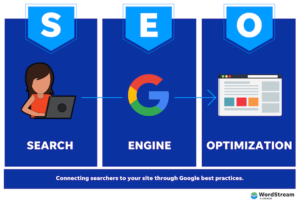
Ceilings are often overlooked components that play a critical role in defining a space’s aesthetic and structural integrity. When damaged, however, they can create visual and functional problems that detract from a home or office.
A musty smell in the ceiling indicates mold growth which can cause several health issues for occupants. This is a serious issue that requires professional Ceiling Repairs Perth and restoration.
Water stains can make ceilings look unattractive and may lead to costly mold and mildew problems. Luckily, you can usually spot these discolorations in the early stages and remove them before they cause serious damage.
The first step to getting rid of a water stain on your ceiling is to find the source of the leak. If the stains are caused by a leaking roof, you’ll need to call a roofing professional to replace damaged shingles or waterproof your home. If the leak is caused by a faulty shower or sink, you’ll need to fix a faulty pipe or drain line.
You can usually get rid of ceiling water stains with either bleach or white vinegar. Both of these household products can dissolve the stains and make them look fresh again. To use bleach, mix one cup of bleach with three cups of warm water and dip a clean washcloth into the solution. Be sure to wear protective gloves and eye protection while working with bleach. Alternatively, you can try a vinegar solution that contains equal parts of baking soda and water. This method will work best on light-colored ceilings, as it won’t bleach them.
It’s important to attend to any type of water stain on your ceiling as soon as you notice it, because active leaks can disintegrate drywall at lightning speed. Once you’ve located the source of the leak and fixed it, you can use a stain-blocking primer and paint to cover up the stained area.
If you’re unable to determine the source of your ceiling stain, consider hiring a home inspector or plumbing professional to help. They’ll be able to pinpoint the problem and recommend the proper repairs. If the damage is extensive, you might need to hire a roofer to replace the affected section of the ceiling, a plumber for any dripping or flooding and a handyman or drywall pro to replace any damaged sections of the drywall.
Condensation
When you spot a wet area on your ceiling, it can be tempting to ignore it and hope it goes away. But a moisture stain is more than just an eyesore, it’s also a warning that your roof could be at risk of failure and may need to be repaired.
Moisture stains are typically caused by condensation. Condensation is a chemical reaction that happens when water vapor in the air comes into contact with cold surfaces. When this happens on a ceiling, it can cause serious damage that needs to be addressed quickly to prevent further issues like mold and rot.
The most common cause of ceiling condensation is poor ventilation and insulation in the attic space above. If these are not corrected, heat can be trapped in the attic space, which warms the ceiling and leads to condensation. This can be further exacerbated by activities that produce excess humidity, such as drying clothes or taking hot showers. It’s a good idea to use exhaust fans and vents when performing these activities, open windows as much as possible and keep the humidity level in your home as low as possible to minimize the likelihood of condensation on the ceiling.
Thankfully, there are simple ways to reduce the chances of condensation on your ceiling, including installing vents and exhaust fans in bathrooms and kitchens. It’s also a good idea to install more insulation, as this will help the room keep a warmer temperature and limit the amount of humid air that can rise into the attic space.
Of course, it’s impossible to eliminate condensation completely, as merely breathing adds some humidity to the air. However, by making a few basic lifestyle changes, you can drastically reduce the chance of condensation building up on your ceiling and causing significant problems in your home. Investing in these home improvements can not only reduce your condensation risks, but they will also improve energy efficiency and help lower your heating bills. This makes them well worth the investment. Contact your local roofing expert today to learn more about these simple and cost-effective ways to avoid costly ceiling repairs in the future.
Cracks
A crack in your ceiling isn’t necessarily a problem, but it depends on the size and location of the crack as well as what’s causing it. Hairline cracks are common, and usually appear at the joints between sheets of plasterboard, and they may simply be down to age or poor construction where they weren’t properly filled and taped before plastering. Taking this type of damage seriously is important, and you should seek a professional assessment as soon as possible.
Larger cracks in the centre of your ceiling (especially if accompanied by sagging) are more serious and could be an indication that there is structural damage. This could be caused by heavy objects being placed on the ceiling, water damage, or foundation settlement. In most cases, the cause will be a structural issue and it is recommended that you seek immediate advice from a professional.
To repair these types of cracks, it’s a good idea to work from above, which means gaining access to the attic or removing flooring from the room above. Once you’ve done this, remove any insulation from around the affected area and scrape away any old paint to expose the sound plaster beneath. Clean the crack thoroughly and apply a coat of primer to the exposed surface, before applying a second coat once it has dried. A third coat of filler can be added to ensure that the crack is patched, and it’s important that you score the bonding on the first and second coat of filler to create a key for the next coat to adhere to.
Once the filler has dried, you can sand and vacuum the ceiling to remove any dust. Once the surface is smooth, you can use a roller or brush to apply a coat of ceiling paint (ideally in a colour that already matches your current ceiling).
When assessing whether to repair cracks on your ceiling yourself, it’s worth considering what other damage may be present in your home. For example, discolored or sagging areas in your ceiling might indicate the presence of a serious water leak. This is something that should be inspected by a plumber and repaired as soon as possible to avoid long-term problems with the structural integrity of your home.
Sagging
A sagging ceiling, also called the ‘pillowing’ effect seen in some homes is an obvious home maintenance issue. If left unattended, sagging ceilings can become dangerous and pose a risk of collapse. This is a very real threat and should not be ignored. Sagging ceilings can be caused by a number of issues. These include water damage, inadequate construction and termite activity. Luckily, most sagging ceiling problems are fairly easy to repair, especially if they are caught early. The most common cause of sagging is a water leak. The leaking water can seep into the plaster and support beams causing them to weaken. Water can also absorb into the ceiling insulation, which can become extremely heavy and lead to sagging.
It is important that you get any water leaks fixed as soon as possible to avoid further sagging or damage. A building inspector can check for any existing problems and advise you on the best course of action to take. If you are thinking of buying a property, you can have the sagging ceiling checked during a pre-purchase inspection. This will allow you to identify the cause of the problem and determine if it’s worth purchasing the home.
Another reason for sagging is inadequate or uneven wall framing. This can happen when the wall frames were constructed without any attention to detail or are of poor quality. It’s also common in older homes, where minimal glue and fixings were used at the time of construction. Over time, these can become loose and break, leading to sagging and cracking of the plasterboard and cornices.
Finally, movement in the frame or foundations of a home can also cause ceilings to sag. This is because seasonal temperature changes can make structures expand or shrink, which in turn can cause materials attached to or resting on them to move or stretch. Again, these small movements can cause serious damage if not addressed quickly and efficiently.
In the case of sagging on a plasterboard ceiling, it may be necessary to replaster and replace the ceiling board. In more serious cases, it’s often necessary to use a strong sagging support jack system that attaches to the lath base and spans the length of the room. This system can help prevent the ceiling from sagging and potentially collapsing.



